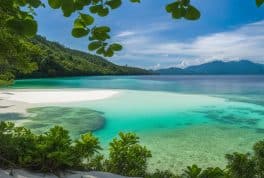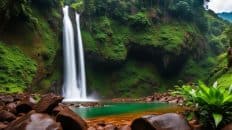Negros Oriental
Negros Oriental, located on the Island of Negros in the Philippines' Central Visayas region, is known for its natural beauty, ranging from idyllic beaches to lush mountains. Its capital, Dumaguete City, is a cultural and educational center, home to the prestigious Silliman University. The province offers rich biodiversity, notably in marine sanctuaries like Apo Island, and blends Filipino traditions with its Spanish colonial heritage. With a mix of agriculture and emerging sectors like tourism, Negros Oriental is a vibrant blend of nature and culture.
Top 10 Things to see in Negros Oriental
- Apo Island: Renowned for its stunning coral gardens and diverse marine life, making it a paradise for snorkelers and divers.
- Dumaguete City: Known as the "City of Gentle People," explore its rich cultural heritage, historic landmarks, and vibrant seafront boulevard.
- Casaroro Falls: A majestic waterfall located in Valencia, offering breathtaking scenery and a refreshing natural pool.
- Rizal Boulevard: A popular seafront promenade in Dumaguete, perfect for leisurely walks, dining, and enjoying the sunset.
- Pulangbato Falls: Unique for its red-tinted water, this natural attraction in Valencia is surrounded by lush greenery.
- Silliman University: The first American university in the Philippines, its campus is rich in history and architecture.
- Manjuyod Sandbar: Often referred to as the "Maldives of the Philippines," it features pristine white sands and clear turquoise waters.
- Twin Lakes of Balinsasayao and Danao: These serene and picturesque crater lakes in Sibulan are ideal for nature lovers and bird watchers.
- Mount Talinis: Also known as Cuernos de Negros, it’s a favorite destination for hikers and adventure enthusiasts.
- Mabinay Caves: A must-visit for spelunkers, Mabinay is known as the "Cave Town" with numerous impressive caves to explore.
Guides and Tours
Cities on Negros Oriental
- Bais City
- Bayawan City
- Canlaon City
- Dumaguete City (the capital city of Negros Oriental)
- Guihulngan City
- Tanjay City
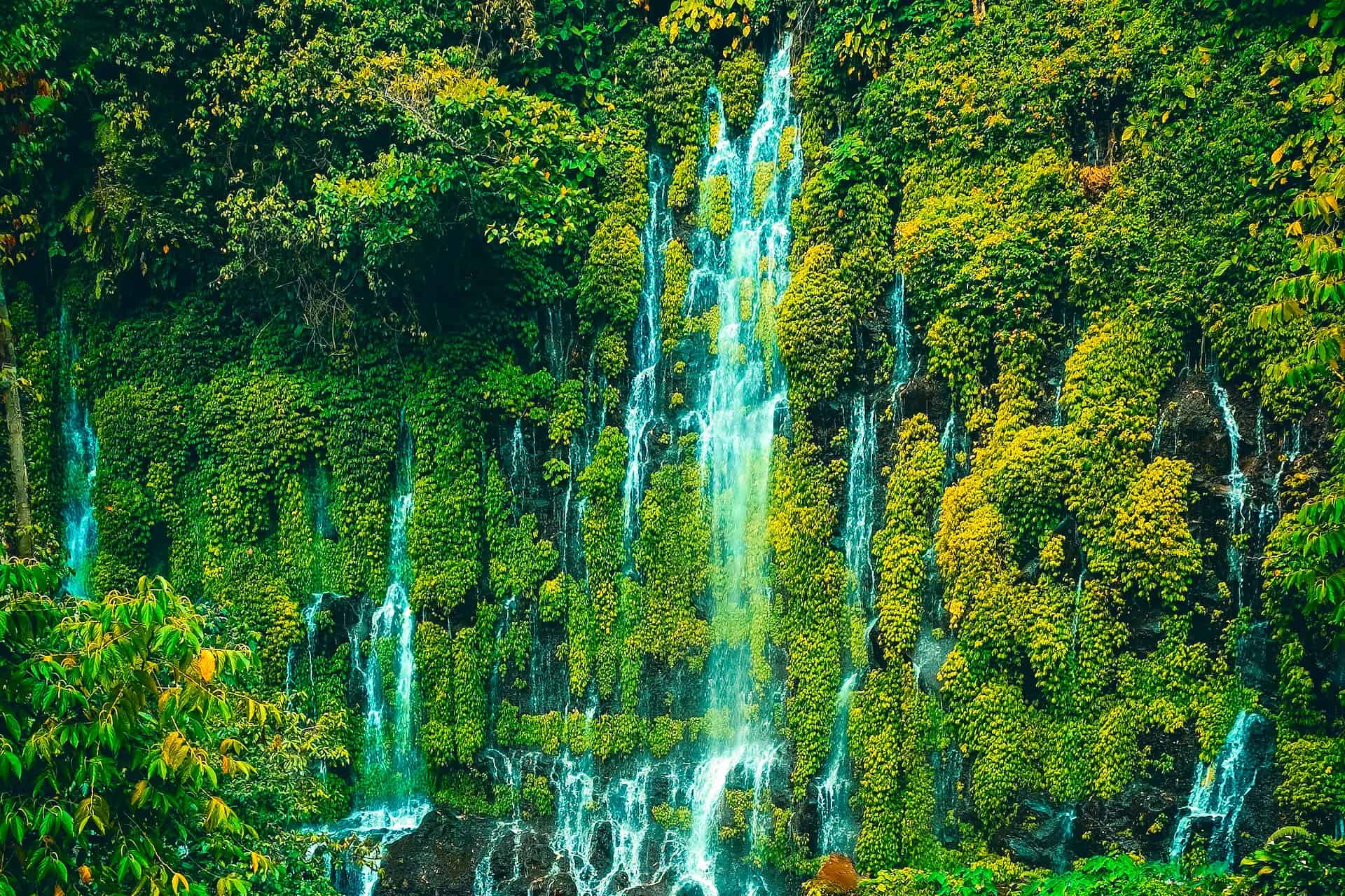
Top 10 Questions and Answers about Negros Oriental
- What is Negros Oriental?
- Negros Oriental is a province in the Central Visayas region of the Philippines. It is located on the southeastern half of Negros Island and is known for its picturesque landscapes, rich culture, and diverse wildlife.
- What is the capital of Negros Oriental?
- The capital of Negros Oriental is Dumaguete City, often referred to as the "City of Gentle People". It's a popular destination for tourists and students due to its universities and laid-back lifestyle.
- What are the main tourist attractions in Negros Oriental?
- Notable attractions include Apo Island, a world-renowned diving spot; the Manjuyod Sandbar, often called the "Maldives of the Philippines"; and the Twin Lakes of Balinsasayao and Danao, known for their natural beauty.
- What is the local cuisine of Negros Oriental?
- The cuisine features a mix of Filipino and Spanish influences. Specialties include "budbud", a type of sticky rice cake, and "sinamak", a local vinegar. Seafood and sweet desserts are also prominent.
- What languages are spoken in Negros Oriental?
- Cebuano is the primary language spoken in the province. English and Tagalog are also widely understood and spoken, especially in urban areas and tourist destinations.
- What is the climate like in Negros Oriental?
- The climate is tropical, with a dry season from January to May and a wet season from June to December. The province is also occasionally subject to typhoons.
- What are the unique cultural aspects of Negros Oriental?
- The province is known for its festivals, such as the Buglasan Festival, a celebration of the island's culture and heritage. Traditional music, dance, and crafts are an integral part of local life.
- How can one travel to Negros Oriental?
- Negros Oriental is accessible by air, with flights to Dumaguete City from major cities in the Philippines. It's also reachable by sea, with ferry services from neighboring islands.
- What wildlife can be found in Negros Oriental?
- The province is home to diverse wildlife, including rare and endangered species like the Negros bleeding-heart pigeon and the Visayan spotted deer. Marine life around Apo Island is particularly rich.
- What are some popular activities in Negros Oriental?
- Popular activities include diving and snorkeling, particularly around Apo Island; hiking in Mount Talinis and other natural parks; and exploring the rich cultural heritage in cities like Dumaguete.
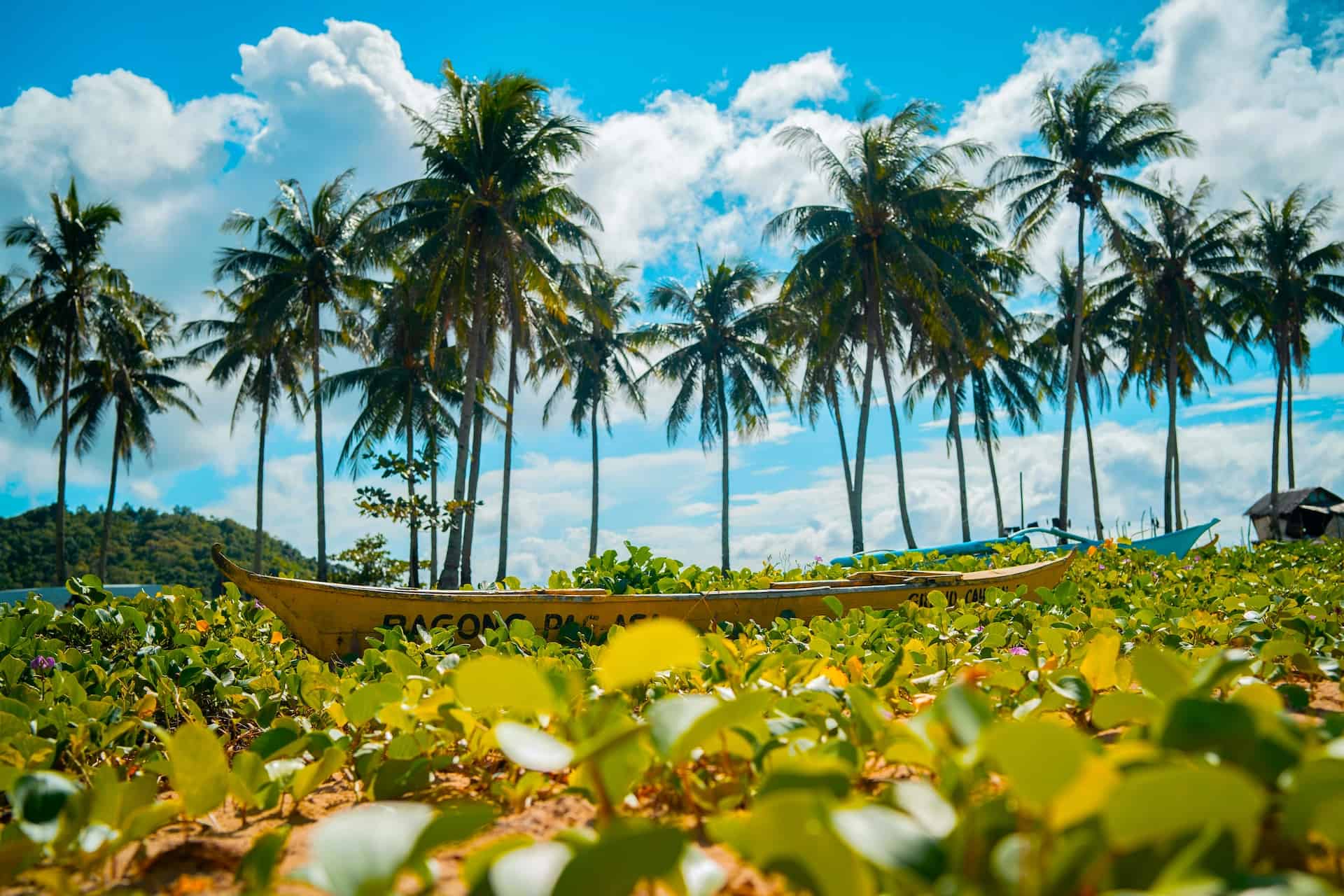
Why you should Visit Negros Oriental
Discovering the Charm of Negros Oriental: A Traveler's Haven
Negros Oriental, located in the heart of the Philippines' Central Visayas, is a destination that truly embodies the essence of tropical paradise combined with rich cultural heritage. This comprehensive review explores the myriad reasons why a visit to this enchanting province should be on every traveler's bucket list.
1. Natural Splendors: A Journey Through Pristine Landscapes
The natural beauty of Negros Oriental is nothing short of breathtaking. From the crystal-clear waters of Apo Island to the lush greenery of the Twin Lakes of Balinsasayao and Danao, nature enthusiasts will find themselves in a haven of ecological wonders. Apo Island, in particular, is a globally recognized diving spot, famed for its vibrant coral reefs and diverse marine life. Whether you're snorkeling among the colorful fishes or simply basking in the sun on its pristine beaches, the island offers an unforgettable experience.
The province's inland attractions are equally captivating. The Twin Lakes, nestled in the mountains near Sibulan, provide a serene escape with their stunning vistas and rich biodiversity. For the more adventurous, Mount Talinis, one of the tallest peaks in the Visayas, offers challenging trails leading to breathtaking views.
2. Cultural Tapestry: Immersing in the Local Heritage
Negros Oriental's cultural landscape is as diverse as its natural one. The province's history is a blend of indigenous traditions and influences from Spanish colonization, all of which are reflected in its festivals, cuisine, and architecture. Dumaguete City, the provincial capital, is a cultural melting pot where old-world charm meets modern vibrancy. A walk down Rizal Boulevard, the city's iconic seafront promenade, is a journey through time, with historical landmarks standing alongside contemporary cafes and restaurants.
The province is also known for its vibrant festivals, such as the Buglasan Festival, which showcases the local culture, arts, and traditions. These festivals are not just tourist attractions but a way for visitors to genuinely connect with the local community and their way of life.
3. Culinary Delights: A Taste of Negros Oriental
The cuisine in Negros Oriental is a delightful fusion of traditional Filipino flavors with Spanish and other international influences. Local specialties such as "budbud" (sticky rice delicacies) and fresh seafood dishes are not only delicious but also tell stories of the province's agricultural and maritime heritage. Dumaguete City, often referred to as a university town due to the presence of Silliman University, is brimming with eateries that offer a range of local and international cuisines, catering to the diverse tastes of its student population and visitors.
4. Adventure and Leisure: Activities for Every Taste
Negros Oriental is not just a feast for the eyes and the palate, but also a playground for adventurers and leisure seekers. The province offers a range of activities, from laid-back pursuits like beach lounging and gentle hikes to more adrenaline-fueled adventures like scuba diving and mountain trekking.
For water enthusiasts, the beaches of Dauin, just a short drive from Dumaguete City, provide excellent snorkeling and diving opportunities, with rich coral reefs and abundant marine life. The Mabinay Caves, known as the "Cave Town," offer spelunking experiences in one of the most extensive cave systems in the Philippines.
If relaxation is your goal, the hot springs in Valencia offer a tranquil retreat amidst natural surroundings. These thermal waters, with their therapeutic properties, are perfect for unwinding after a day of exploration.
5. Educational and Spiritual Enrichment: Silliman University and Beyond
A visit to Negros Oriental is incomplete without experiencing the intellectual and spiritual nourishment it offers. Silliman University, a historic institution in Dumaguete City, is not just an educational landmark but also a center for cultural and spiritual growth. The university's campus, with its old-world architecture and verdant spaces, is a peaceful oasis that invites introspection and learning.
The churches and temples in Negros Oriental, such as the iconic St. Catherine of Alexandria Cathedral in Dumaguete, are not only places of worship but also repositories of history and culture. These religious sites provide insights into the spiritual life of the local community and the province's historical journey.
6. Heartfelt Hospitality: Experiencing the Warmth of the Locals
The true essence of Negros Oriental lies in its people. Known for their warmth and hospitality, the locals make every visitor feel welcome. This genuine friendliness turns mere sightseeing trips into meaningful cultural exchanges. Engaging with the local community, whether through a casual conversation at a café or participating in a local fiesta, enriches the travel experience, providing memories that last a lifetime.
7. Eco-Tourism Initiatives: Preserving Natural Beauty
Negros Oriental’s commitment to sustainable tourism is commendable. Efforts to preserve its natural environments, such as conservation programs in Apo Island and initiatives to protect the forests and marine life, demonstrate the province's dedication to eco-friendly tourism. These initiatives not only ensure the preservation of its natural wonders but also offer tourists an opportunity to contribute to these conservation efforts.
8. Art and Craftsmanship: Celebrating Local Talent
Negros Oriental is not just a land of natural beauty and cultural heritage; it is also a cradle of artistic talent and craftsmanship. The province's art scene reflects a rich tapestry of influences, from indigenous to contemporary. Local artisans are renowned for their skills in weaving, pottery, and woodcraft, creating pieces that are both functional and aesthetically pleasing. The Sidlakang Negros Village in Dumaguete City is a cultural showcase where visitors can admire and purchase local handicrafts. This commitment to preserving and promoting local arts is not just a source of pride for Negros Oriental but also a significant contributor to its cultural identity and economy.
9. Economic Development: Balancing Progress and Tradition
Negros Oriental's journey towards economic development is marked by a careful balance between embracing progress and preserving tradition. The province has witnessed growth in various sectors, including agriculture, tourism, and technology. This economic diversification has brought about improvements in the standard of living while maintaining the essence of the local culture and way of life. The growth of the BPO industry in Dumaguete City, for instance, has introduced new job opportunities for the youth, contributing to the urban development of the province while keeping its cultural heritage intact.
10. Future Prospects: A Vision for Sustainable Growth
As Negros Oriental looks to the future, it does so with a vision of sustainable and inclusive growth. The province continues to invest in infrastructure and human resource development, aiming to build a future that offers prosperity and quality of life for all its residents. The government's focus on environmental conservation and sustainable practices ensures that the natural beauty of Negros Oriental is preserved for future generations.
The province's relationship with neighboring Negros Occidental also plays a role in its future prospects. The shared cultural and environmental heritage of the two provinces provides opportunities for collaborative development initiatives, benefiting the entire Negros Island.
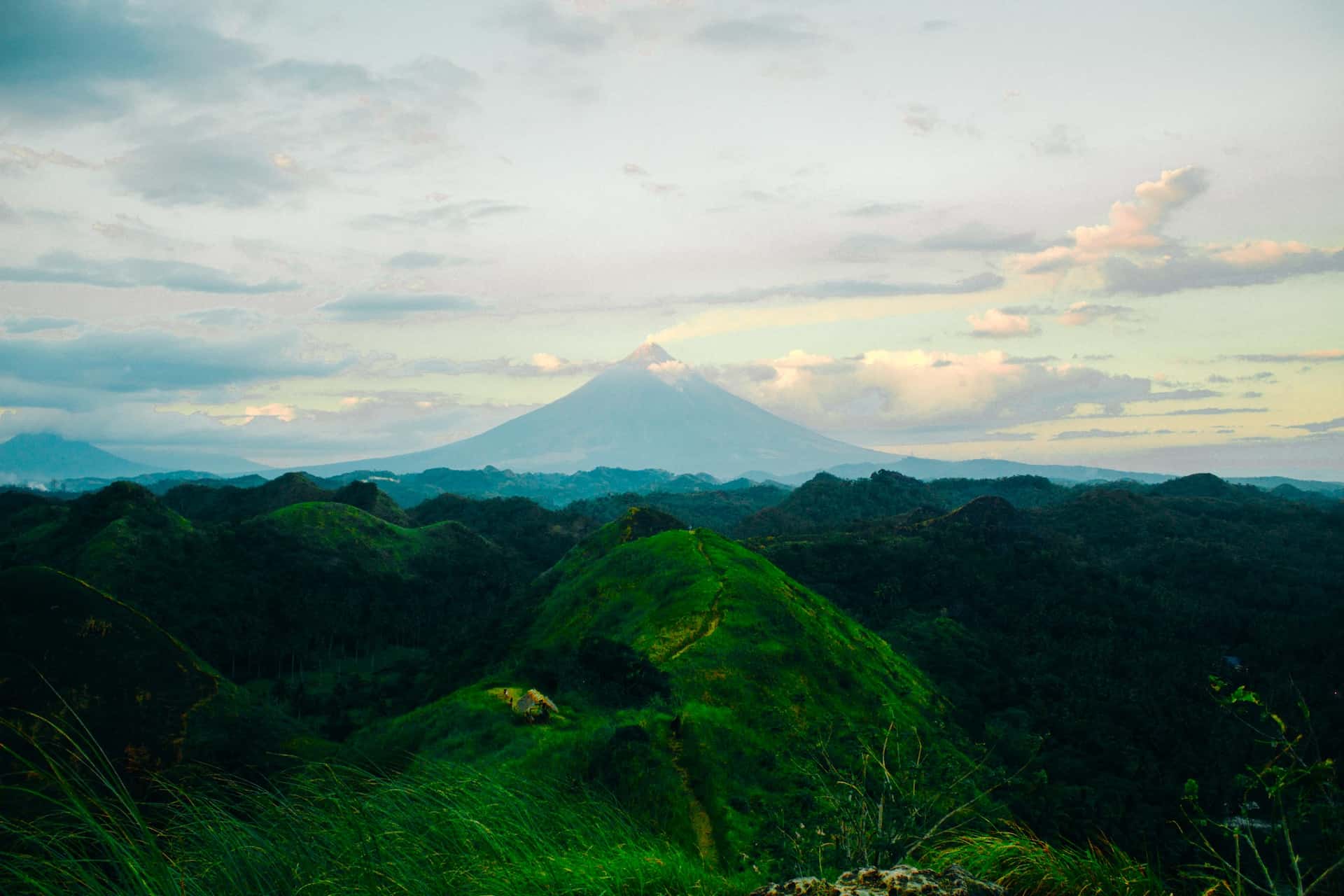
Negros Oriental Facts:
1. Introduction to Negros Oriental: A Province of Rich Heritage and Diverse Landscapes
Nestled in the heart of the Philippines, the province and municipality of Negros Oriental stands as a testament to the rich cultural heritage and stunning natural beauty of this Southeast Asian nation. This enchanting province, part of the larger Negros Island, is a region steeped in history, vibrant culture, and breathtaking landscapes. From the bustling streets of its most populous city, Dumaguete, to the serene coastal towns, Negros Oriental is a place where the past and present converge, offering a unique experience to locals and tourists alike.
Negros Oriental, along with its western counterpart, Negros Occidental, forms the island of Negros. Divided into two provinces, the island is a microcosm of the country’s diversity, with each province having its own distinct charm. Negros Oriental, in particular, captures the essence of the Philippines' cultural and natural splendor. Its capital, Dumaguete City, is not only the seat of governance but also the cultural heart of the province. This city, known for its genteel atmosphere and academic prowess, primarily due to the presence of Silliman University, is often referred to as the 'City of Gentle People.' With a population that embodies warmth and hospitality, Dumaguete is a prime example of why Negros Oriental is a beloved destination for many tourists.
The landscape of Negros Oriental is as varied as its culture. From the lush, rolling hills to the serene beaches that line the Tañon Strait, the province is a feast for the eyes. The region's geography plays a crucial role in its economy, with agriculture being a significant contributor. The fertile lands yield a variety of crops, but it is the rice fields that paint the most picturesque rural scenes, symbolizing the province's agricultural wealth.
The province’s total population reflects a blend of ethnicities and cultures, a melting pot that has given rise to a rich cultural tapestry. This diversity is evident in the various festivals, traditions, and daily life of the people. The Buglasan Festival, for instance, is a colorful celebration that showcases the province’s history, arts, and culture. Similarly, the Sandurot Festival in Dumaguete City brings together locals and visitors in a joyous celebration of unity and friendship.
Negros Oriental’s proximity to Cebu Island, another key region in the Central Visayas, adds to its appeal as a tourist destination. Travelers often combine visits to these two islands to experience the contrast and similarities in their cultures and landscapes. Meanwhile, the nearby island of Bohol, with its famed Chocolate Hills and tarsiers, further enhances the tourism appeal of Negros Oriental, making it part of a triad of must-visit destinations in the Visayas.
The province is not just a tourist haven but also an emerging hub for business and education. The rise of business process outsourcing (BPO) centers in Dumaguete City attests to the province’s growing role in the national economy. This development has brought new opportunities for the locals, transforming the city into a blend of traditional charm and modern dynamism.
Education plays a central role in the life of Negros Oriental, with Silliman University being a pillar of the academic community. As one of the oldest and most prestigious universities in the Philippines, it attracts students from across the nation and even internationally. The university's influence extends beyond academia; it is a cultural and social hub that enriches the city’s atmosphere.
Despite its modern advancements, Negros Oriental remains true to its roots. The province is a haven for those who seek a slower pace of life, away from the hustle and bustle of more populous cities in the south of the country. The gentle people of Dumaguete, the rustic charm of the smaller towns, and the serene beauty of the landscapes all contribute to the province’s allure.
As one journeys through Negros Oriental, the contrast between urban and rural life becomes apparent. While Dumaguete City buzzes with activity, the smaller towns and municipalities offer a glimpse into the traditional Filipino way of life. These areas, each with its own unique character, are an integral part of the province's identity. From the coastal barangays to the mountainous regions, the sense of community is strong, and the traditions are kept alive by the locals.
The province is not without its challenges, however. As with many regions in the Philippines, Negros Oriental faces issues related to economic development, environmental sustainability, and social equity. Yet, the resilience and ingenuity of its people have enabled them to navigate these challenges effectively. The local government, along with various community organizations, works tirelessly to ensure that the province continues to thrive while preserving its natural and cultural heritage.
Negros Oriental’s future looks promising, with plans for further development in tourism, agriculture, and education. The government’s initiatives, coupled with the private sector's investment, are set to enhance the province's profile both nationally and internationally. As it embarks on this journey of growth and development, Negros Oriental remains a jewel in the Philippines' crown, a place where tradition and progress coexist harmoniously.
In conclusion, Negros Oriental is a province that encapsulates the essence of the Filipino spirit. Its rich history, diverse culture, stunning landscapes, and warm people make it a destination worth exploring. Whether one is visiting for business, education, or leisure, the province offers a unique and enriching experience. As the sun sets over the Tañon Strait and the lights of Dumaguete City start to twinkle, one cannot help but feel enchanted by the beauty and charm of Negros Oriental. It is a place that captures the heart and soul, inviting visitors to delve deeper into its wonders and discover the myriad of experiences it has to offer.

2. Geography and Demographics of Negros Oriental: A Mosaic of Land and People
Negros Oriental, situated in the southeastern part of the enigmatic Negros Island, presents a diverse and fascinating geographical landscape that is as varied as its history and culture. This province, sharing the island with its western neighbor Negros Occidental, offers a unique blend of natural beauty and demographic diversity that distinguishes it from other regions in the Philippines. From its mountainous terrains to the serene coastlines along the Tañon Strait, Negros Oriental is a geographical marvel, offering vistas that captivate the soul and invigorate the spirit.
The province's land area, covering approximately 5,385.53 square kilometers, is a tapestry of varied geographical features. It is characterized by rugged mountain ranges, fertile valleys, and a long stretch of coastline that offers breathtaking views of the sea. These geographical features have not only shaped the province’s natural beauty but also its economic and social structures. The eastern part of Negros Oriental, facing north and east towards the Tañon Strait, is noted for its picturesque beaches and rich marine life, making it a popular destination for tourists and nature enthusiasts. In contrast, the western part, due west and bordering Negros Occidental, is predominantly hilly and mountainous, providing a haven for adventurers and those who seek solace in the lap of nature.
The population of Negros Oriental is a reflection of the province's rich cultural tapestry. According to the Philippine Statistics Authority, the province's total population stands at over 1.3 million, making it one of the more densely populated areas in the Central Visayas region. This population is distributed across several cities and numerous municipalities, each contributing to the province's vibrant cultural mosaic. Dumaguete City, the capital of Negros Oriental, is the most populous city in the province. Known for its academic institutions, particularly Silliman University, and its gentle people, Dumaguete is the pulsating heart of the province, drawing students, professionals, and tourists alike.
The demographic profile of Negros Oriental is diverse, with a mix of ethnic groups and cultures. This diversity is a result of the province’s historical interactions with various cultural influences, including Spanish colonialism and trade relations with neighboring regions. The various towns and municipalities of Negros Oriental, each with its unique charm and character, contribute significantly to the province's demographic landscape. From the bustling streets of Dumaguete City to the serene barangays in the outskirts, the province is a melting pot of traditions, languages, and lifestyles.
Negros Oriental’s neighboring province, Negros Occidental, shares a similar historical background but has developed a distinct cultural identity. The division of Negros Island into two provinces – Negros Oriental and Negros Occidental – has led to a fascinating divergence in dialects, cultural practices, and economic activities. While Negros Occidental has a more pronounced Spanish influence, Negros Oriental showcases a blend of indigenous and modern Filipino cultures, a testament to its rich historical narrative.
The towns and municipalities of Negros Oriental are integral to understanding the province's demographic dynamics. These smaller administrative divisions, each with its own local government, play a crucial role in managing the province’s diverse population. The municipalities range from coastal towns teeming with fishermen and small-scale entrepreneurs to inland communities where agriculture is the mainstay. The barangays, the smallest administrative units in the Philippines, are where the essence of community life in Negros Oriental can be truly experienced. These barangays are not just administrative divisions; they are vibrant communities where traditions are preserved, and local governance is practiced at the grassroots level.
Negros Oriental's population growth has been steady, reflecting the province's economic development and the migration patterns within the region. This growth has brought about challenges and opportunities, particularly in urban areas like Dumaguete City, where the influx of students, professionals, and tourists has led to a dynamic, ever-evolving urban landscape. The city, with its numerous educational institutions, including the renowned Silliman University, has become a melting pot of cultures, attracting people from different parts of the Philippines and the world.
In addition to Dumaguete, other populous cities and municipalities in Negros Oriental contribute to the province's demographic diversity. Each of these areas has its unique characteristics, shaped by their geographical location, economic activities, and cultural heritage. The coastal towns, for instance, have a strong fishing community, while the inland areas are predominantly agricultural, with rice being one of the primary crops. The population in these areas is a mix of indigenous groups, settlers from other parts of the country, and a growing number of expatriates and tourists.
Negros Oriental's demographic profile is also shaped by its role as a tourism destination. The province's natural beauty, coupled with its rich cultural heritage, attracts a significant number of tourists each year. This influx of tourists has a direct impact on the province's demographics, particularly in coastal areas where tourism-related businesses thrive. The local population, in turn, benefits from the opportunities that tourism brings, from employment in the hospitality sector to the promotion of local crafts and cuisine.
The province's demographics are further influenced by its proximity to other key regions in the Central Visayas, such as Cebu Island and Bohol. These neighboring islands, each with its own unique attractions, contribute to the flow of tourists and migrants to Negros Oriental. The connectivity between these islands, facilitated by regular ferry services and improved road networks, has made Negros Oriental a strategic location for business and tourism in the region.
As Negros Oriental continues to grow and develop, its demographic landscape is likely to evolve further. The challenges of managing a growing population, ensuring sustainable development, and preserving the province’s cultural heritage are paramount. However, the ingenuity and resilience of its people, coupled with effective governance, have enabled Negros Oriental to navigate these challenges successfully.
In conclusion, the geography and demographics of Negros Oriental are integral to understanding the province's identity and charm. Its varied landscapes, from the serene beaches to the rugged mountains, and its diverse population, from the gentle people of Dumaguete City to the vibrant communities in the municipalities, make Negros Oriental a province of endless discovery. Whether one is exploring its natural wonders or delving into its cultural depths, Negros Oriental offers a journey that is as enriching as it is enlightening. As the province looks towards the future, it stands poised to continue its legacy as a region of beauty, diversity, and vibrant community life.

3. Negros Oriental’s Capital: Dumaguete City - The Heartbeat of the Province
Negros Oriental, a province replete with natural beauty and cultural diversity, finds its heart and soul in Dumaguete City. This capital city, nestled on the southeastern coast of Negros Island, opposite its sister province, Negros Occidental, serves not only as the administrative center but also as the cultural, educational, and economic hub of the region. Dumaguete City, often hailed as the ‘City of Gentle People,’ is a melting pot of traditions, modernity, and academic excellence, making it a pivotal element in the story of Negros Oriental.
The city's population reflects a microcosm of the province's diversity. Home to over 130,000 residents, Dumaguete City stands as one of the most populous cities in Negros Oriental, a status that brings with it both challenges and opportunities. The city's inhabitants are a blend of locals, students from various parts of the Philippines and abroad, expatriates, and a growing number of tourists. This demographic mix has given rise to a vibrant community, where traditional Filipino values coexist with modern urban sensibilities.
Dumaguete City's rise to prominence is inextricably linked to its role as an educational center. The presence of Silliman University, one of the oldest and most prestigious institutions in the Philippines, has shaped the city's character and development. Founded in 1901, Silliman University is not just an academic institution; it is a cultural beacon that attracts students, academics, and thinkers from across the globe. The university's influence extends beyond its gates, permeating the city's cafes, parks, and public spaces, where discussions on literature, politics, and philosophy are as common as the gentle sea breeze.
The influence of Silliman University is evident in the city’s cultural life. The university hosts numerous events throughout the year, including art exhibits, theater productions, and the much-anticipated Sandurot Festival. This festival, a celebration of Dumaguete's rich cultural heritage, is a kaleidoscope of music, dance, and color, drawing participants and spectators from across the province and beyond. The festival is a testament to Dumaguete City’s status as a melting pot of cultures, a place where history, tradition, and modernity converge.
The city's economy is as dynamic as its culture. While Dumaguete has traditionally been a university town, it has evolved to become a center for business and tourism. The rise of the Business Process Outsourcing (BPO) industry has brought a new wave of economic activity to the city, creating jobs and spurring urban development. This growth, however, has been balanced with the preservation of the city’s charm and heritage, a testament to the local government's commitment to sustainable development.
Tourism is another vital component of Dumaguete City's economy. The city serves as a gateway to visit many of Negros Oriental’s attractions, from the pristine beaches south to the lush mountain ranges up north. Tourists, both local and international, are drawn to the city's laid-back atmosphere, historical landmarks, and culinary delights. The Rizal Boulevard, a picturesque promenade along the seafront, is a favorite spot for both locals and visitors, offering stunning views of the sea and a taste of the city’s vibrant nightlife.
The streets of Dumaguete City are a blend of old and new. Century-old churches stand alongside modern buildings, while traditional markets coexist with contemporary shopping malls. The city’s public markets are a sensory overload, with vendors selling everything from fresh seafood to locally grown fruits and vegetables. The city is also renowned for its culinary scene, which offers a mix of traditional Filipino dishes and international cuisine, a reflection of its cosmopolitan population.
Dumaguete City's relationship with the rest of Negros Oriental is symbiotic. As the capital city, it serves as the political and administrative center of the province, housing various government offices and institutions. The city’s development has a ripple effect across the province, influencing economic policies, infrastructure projects, and cultural initiatives. In return, the surrounding towns and municipalities of Negros Oriental contribute to the city’s vitality, supplying agricultural products and participating in its vibrant cultural life.
The city's growth has not been without its challenges. Urbanization has brought issues such as traffic congestion and environmental concerns. However, the local government, in collaboration with academic institutions like Silliman University and civil society organizations, has been proactive in addressing these challenges. Initiatives focused on sustainable urban development, environmental conservation, and community engagement are at the forefront of the city's agenda.
As Dumaguete City looks to the future, it does so with an eye towards balancing growth with sustainability. The city is poised to continue its trajectory as a center of education, culture, and economic development in Negros Oriental. With its unique blend of gentle people, rich history, and modern dynamism, Dumaguete City remains not just the capital of Negros Oriental, but its beating heart, pulsating with the energy and aspirations of its people.
In conclusion, Dumaguete City is more than just the capital of Negros Oriental; it is a symbol of the province's spirit. Its streets tell stories of tradition and progress, its institutions embody academic and cultural excellence, and its people represent the warmth and hospitality that Negros Oriental is known for. Whether one is wandering along Rizal Boulevard, exploring the halls of Silliman University, or engaging with the local community, Dumaguete City offers a glimpse into the soul of Negros Oriental, a province that continues to captivate and inspire those who visit its shores.

4. History and Culture of Negros Oriental: A Tapestry of Time and Tradition
Negros Oriental, a province rich in history and culture, offers a tapestry that weaves together various threads of time, traditions, and influences. Situated in the southeastern part of Negros Island, alongside its neighbor Negros Occidental, Negros Oriental’s story is a fascinating journey through time, marked by pre-colonial civilizations, Spanish colonial influences, and the evolution into the vibrant, culturally diverse province it is today.
The history of Negros Oriental can be traced back to the pre-colonial era, where early settlers, known as the Negritos or Atis, roamed the island. These indigenous people lived in small, scattered communities, primarily engaging in hunting and gathering. The arrival of other Malay groups, who brought with them the knowledge of rice cultivation and animal husbandry, marked a significant shift in the island's socio-economic landscape. These settlers laid the foundation for the agricultural society that would characterize Negros Oriental for centuries to come.
The Spanish colonization of the Philippines in the 16th century brought about profound changes in Negros Oriental. The Spaniards introduced Christianity, new forms of governance, and a feudal system of land ownership, which significantly altered the socio-cultural fabric of the region. Spanish friars established towns and parishes, with the Christian cross and the sword playing pivotal roles in the conversion and control of the local population. The influence of Spanish colonization is still evident in the province's architecture, religious practices, and festivals.
One of the most enduring legacies of Spanish rule in Negros Oriental is the establishment of Dumaguete as the capital city. Founded as a small coastal settlement, Dumaguete grew under Spanish rule to become a significant center of commerce and governance. The city's name is said to have been derived from the Visayan word 'dagit,' which means 'to snatch,' a reference to the frequent raids by marauding pirates who plagued the coastal town. The construction of a stone watchtower, known as the Dumaguete Belfry, in the 18th century, served as a lookout and defense against these pirate attacks.
The cultural landscape of Negros Oriental is a reflection of its rich history. The province is known for its vibrant festivals, which blend indigenous, Spanish, and modern influences. The Buglasan Festival, celebrated annually in Dumaguete City, is a showcase of the province's history, arts, and culture. This festival, often referred to as the 'Festival of Festivals,' brings together various towns and municipalities in a grand celebration of Negros Oriental's heritage and traditions.
Another significant aspect of Negros Oriental’s culture is its culinary traditions. The province's cuisine is a delicious amalgamation of indigenous, Spanish, and Asian influences. Dishes such as ‘budbud,’ a type of sticky rice cake, and ‘binignit,’ a sweet coconut milk-based stew with fruits and tubers, are staples in local households. These dishes not only tantalize the palate but also tell stories of the province’s agricultural bounty and the ingenuity of its people.
Negros Oriental’s artistic expressions are as diverse as its history. The province is home to a thriving community of artists, musicians, and craftspeople who draw inspiration from the region's rich cultural tapestry. Traditional crafts such as weaving and pottery coexist with contemporary art forms, reflecting the province’s ability to honor its past while embracing modernity.
The influence of neighboring Negros Occidental and other regions of the Philippines is also evident in Negros Oriental’s culture. The exchange of ideas, traditions, and people between the two provinces of Negros Island has contributed to the dynamic cultural milieu of Negros Oriental. The intermingling of Hiligaynon, the language predominantly spoken in Negros Occidental, with Cebuano, the main language of Negros Oriental, is just one example of this cultural interplay.
Education and intellectual pursuits have also played a significant role in shaping the culture of Negros Oriental. Silliman University, established in Dumaguete City in the early 20th century, has been a bastion of learning and cultural exchange. The university has fostered a vibrant intellectual community, contributing significantly to the cultural and social development of the province.
The spirit of Negros Oriental is perhaps best embodied in its people. Known for their warmth, hospitality, and resilience, the people of Negros Oriental have a deep sense of pride in their heritage. They are the custodians of the province's history and culture, preserving traditions while adapting to the changing times.
As Negros Oriental continues to evolve, its history and culture remain integral to its identity. The province's journey through time – from its pre-colonial roots to its current status as a vibrant cultural hub – is a testament to the resilience and adaptability of its people. Negros Oriental stands as a beacon of cultural richness in the Philippines, inviting visitors and locals alike to explore and experience its unique heritage.
In conclusion, the history and culture of Negros Oriental are the foundation upon which the province stands today. From the remnants of Spanish colonialism to the colorful festivals that celebrate its diverse heritage, Negros Oriental offers a glimpse into the rich tapestry of Filipino history and culture. Whether one is walking through the historic streets of Dumaguete, participating in the jubilant Buglasan Festival, or savoring the local cuisine, the experience is a journey through time, a celebration of the enduring spirit of Negros Oriental.
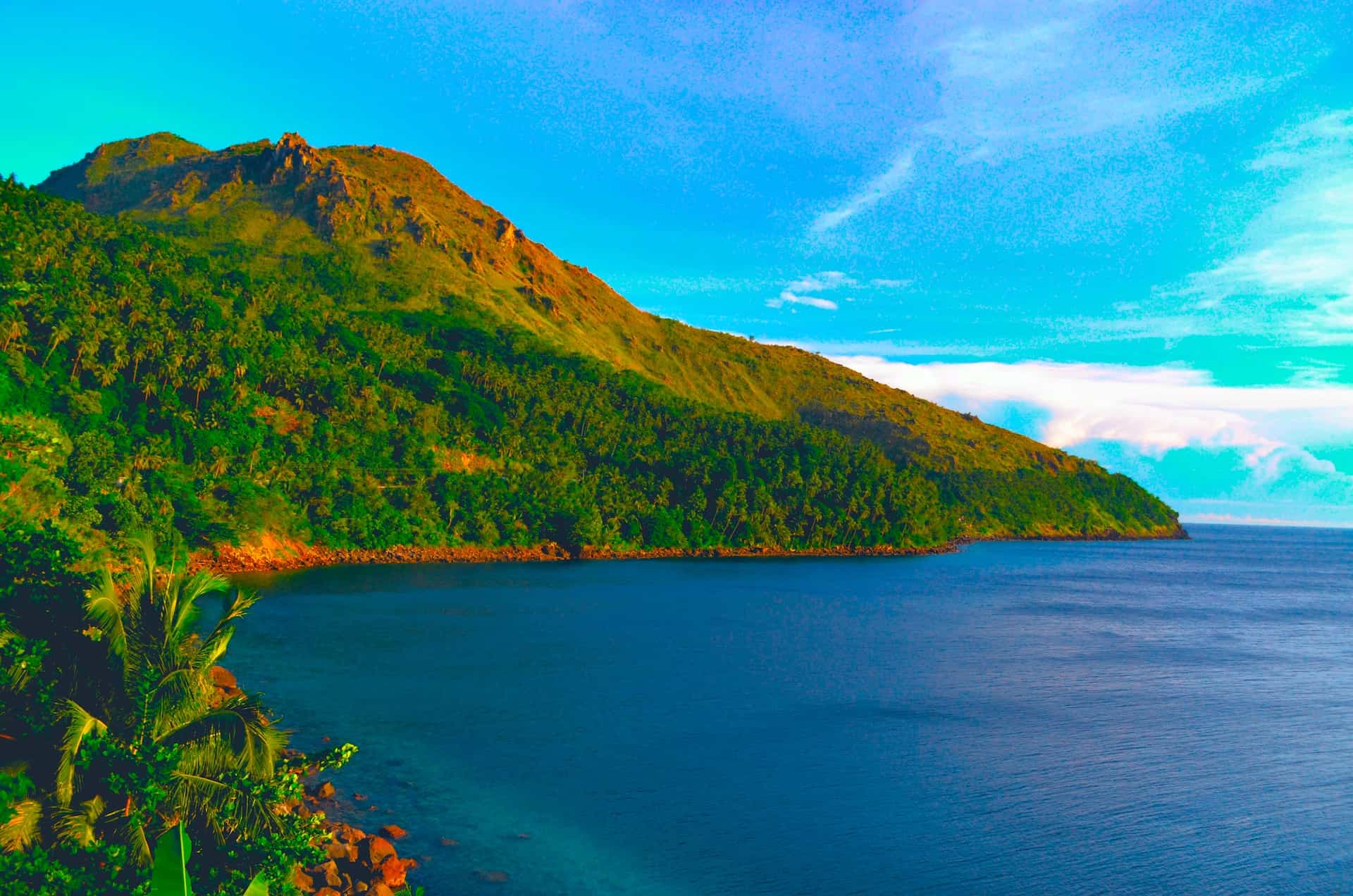
5. Education and Institutions in Negros Oriental: The Pillars of Knowledge and Progress
Negros Oriental, a province rich in cultural heritage and natural beauty, is also distinguished by its commitment to education and the presence of esteemed institutions. This emphasis on education has been a transformative force, shaping the province's intellectual, cultural, and economic landscape. Situated on the southeastern part of Negros Island, adjacent to Negros Occidental, Negros Oriental is home to several educational institutions that serve as beacons of learning, not only for the province but for the entire region.
At the heart of this educational landscape is Silliman University, located in the capital city of Dumaguete. Founded in 1901, Silliman University is not merely an educational institution; it is a historical and cultural landmark. As one of the oldest American-established universities in the Philippines, its influence extends beyond its beautiful campus. The university has become synonymous with academic excellence, attracting students from across Negros Oriental, Negros Occidental, and other parts of the country. With a diverse array of programs in arts, sciences, business, and technology, Silliman University stands as a testament to the province's dedication to higher education and intellectual growth.
The presence of Silliman University has significantly shaped the character of Dumaguete City, earning it the nickname "The Center of Learning in the South." The university's impact is visible in the city's vibrant cultural scene, with numerous art galleries, theaters, and music venues that often collaborate with the university. The Silliman Hall, an iconic building on campus, is not just an architectural marvel but also a cultural center where art exhibits and academic conferences are held. The influence of the university is also evident in the city's public spaces, where students and faculty engage in lively discussions, enriching the intellectual atmosphere of Dumaguete.
Beyond Silliman University, Negros Oriental boasts a range of educational institutions that cater to various levels and fields of study. These include state universities, private colleges, vocational schools, and basic education institutions. These schools play a crucial role in providing quality education to the province’s youth, ensuring that Negros Oriental continues to produce skilled professionals and informed citizens. The commitment to education in Negros Oriental is a response to the evolving needs of its population and the demands of the global job market.
The educational landscape of Negros Oriental is also characterized by its focus on inclusivity and accessibility. Scholarships and financial aid programs are available to assist students from less privileged backgrounds, ensuring that quality education is not a privilege but a right accessible to all children. This inclusive approach to education has been pivotal in promoting social mobility and reducing inequality in the province.
In addition to formal education, Negros Oriental is known for its community-based educational programs. These programs aim to educate the broader community on various issues, including health, environment, and livelihood. They are often a collaborative effort between educational institutions, local government units, and non-governmental organizations. These initiatives reflect the province's holistic approach to education, recognizing that learning extends beyond the classroom.
The collaboration between Negros Oriental and neighboring Negros Occidental in the field of education has been significant. Joint academic programs, research initiatives, and cultural exchanges between institutions in the two provinces have fostered a sense of camaraderie and intellectual synergy. This collaboration is vital in addressing shared challenges and advancing the educational standards of the entire Negros Island.
The impact of education in Negros Oriental extends to the province's economy. The presence of universities and colleges has spurred the growth of related industries, such as publishing, information technology, and hospitality. The province has become a hub for knowledge-based industries, attracting businesses and investors who value the skilled workforce that the educational institutions produce.
Moreover, the emphasis on education has played a crucial role in preserving and promoting the cultural heritage of Negros Oriental. Educational institutions often serve as custodians of the province's history and traditions, conducting research and hosting events that celebrate the local culture. Festivals, art shows, and cultural workshops organized by these institutions are instrumental in keeping the province's traditions alive and relevant.
As Negros Oriental looks to the future, the role of education and institutions in driving progress and development remains paramount. The challenges of the modern world require innovative solutions, and the province's educational institutions are at the forefront of this endeavor. By nurturing critical thinking, creativity, and a sense of social responsibility, these institutions are preparing the next generation of leaders and changemakers.
In conclusion, the education and institutions of Negros Oriental are more than just pillars of knowledge; they are catalysts for change and progress. From Silliman University's historic campus to the community-based educational programs, the province's commitment to learning is evident. This commitment has transformed Negros Oriental into a center of academic excellence and cultural vibrancy, a place where education is revered as the key to a brighter, more prosperous future. As students and educators continue to push the boundaries of knowledge, Negros Oriental stands poised to meet the challenges of tomorrow, armed with the power of education.
6. Economy and Business in Negros Oriental: A Landscape of Growth and Innovation
Negros Oriental, a province that lies on the southeastern tip of Negros Island, adjacent to Negros Occidental, has long been a region of diverse economic activities. The province's economy, traditionally rooted in agriculture, has evolved to encompass a variety of sectors, reflecting its dynamic and innovative spirit. This economic landscape, marked by growth and diversification, has been instrumental in shaping the province into a burgeoning hub in the Central Visayas region.
Agriculture remains a cornerstone of Negros Oriental's economy. The province's fertile lands, nourished by the region's climate and geography, are ideal for a variety of crops, with rice being one of the primary agricultural products. Rice fields dot the landscape of Negros Oriental, a testament to the province's agricultural heritage and its role as a significant contributor to the country's food supply. Apart from rice, the province is also known for its production of other crops such as sugarcane, coconuts, and corn, which are integral to the local economy and the livelihoods of many Negrenses.
However, the economy of Negros Oriental extends far beyond agriculture. In recent years, the province has witnessed significant growth in other sectors, most notably in business process outsourcing (BPO). Dumaguete City, the capital of Negros Oriental, has emerged as a key player in the BPO industry, attracting several national and international companies. This growth has brought about a new wave of employment opportunities, changing the economic landscape of the city and the province at large. The presence of these BPO companies has not only bolstered the local economy but has also introduced a modern dimension to the province's business environment.
Tourism is another vital sector contributing to the economic tapestry of the country, Negros Oriental. The province and country's natural beauty, from its stunning coastlines to its lush mountains, coupled with its rich cultural heritage, makes it an attractive destination for tourists. Destinations such as the charming city of Dumaguete, the idyllic resorts of Apo Island, and the serene Lake Balanan are just a few examples of the province and country's diverse attractions. The tourism industry in Negros Oriental is not only a source of revenue but also a platform for showcasing the province and country's culture and traditions to a global audience.
The economic relationship between Negros Oriental and its western neighbor, Negros Occidental, is also significant. The two provinces, despite being separated politically, share strong economic ties. The flow of goods, services, and people between Negros Oriental and Negros Occidental is a key component of the regional economy. This inter-provincial commerce has been facilitated by improved transportation links and cooperative initiatives, strengthening the economic bond between the two provinces.
Small and medium-sized enterprises (SMEs) form the backbone of Negros Oriental’s economy. These businesses, ranging from handicrafts to food processing, play a crucial role in driving economic growth and providing employment. The entrepreneurial spirit is strong in Negros Oriental, with many locals venturing into business, supported by government programs and initiatives aimed at fostering SME development.
Infrastructure development has been pivotal in supporting the province's economic growth. Investments in road networks, ports, and other public utilities have improved connectivity within the province and with neighboring regions. These developments have facilitated easier movement of goods and services, boosted tourism, and enhanced the overall business environment in Negros Oriental.
Negros Oriental's economy is also characterized by its commitment to sustainability and environmental conservation. With the province's economy heavily reliant on its natural resources, there has been a growing emphasis on sustainable practices. Initiatives such as eco-tourism, organic farming, and renewable energy projects reflect the province's approach to balancing economic development with environmental stewardship.
The province's educational institutions, particularly Silliman University, have played a significant role in the economic development of Negros Oriental. The university and other educational centers have been instrumental in providing a skilled workforce, conducting research and development, and fostering innovation. The collaboration between the academic sector and the business community has been crucial in driving economic progress and addressing the challenges of modernization.
As Negros Oriental continues to grow and diversify its economy, it faces the challenge of ensuring inclusive and sustainable development. Addressing issues such as income inequality, rural poverty, and environmental degradation is essential for the long-term prosperity of the province. The government, along with the private sector and civil society, is working towards creating an economic environment that benefits all segments of society.
In conclusion, the economy and business landscape of Negros Oriental is a reflection of the province's dynamic and innovative character. From its agricultural roots to the emerging sectors of BPO and tourism, the province has demonstrated its ability to adapt and thrive in a changing economic environment. With its rich natural resources, entrepreneurial spirit, and commitment to sustainability, Negros Oriental is well-positioned to continue its journey of economic growth and development. As it looks to the future, the province stands ready to embrace new opportunities, foster innovation, and build a prosperous and inclusive economy for all its residents.
7. Tourism and Attractions in Negros Oriental: A Journey of Discovery and Enchantment
In the heart of the Central Visayas region of the Philippines lies Negros Oriental, a province of unparalleled beauty and charm. Flanked by its sister province Negros Occidental, Negros Oriental is a destination where the splendor of nature meets the richness of culture, creating a tapestry of experiences that captivate tourists from around the world.
Dumaguete City, the provincial capital, is often the starting point for many tourists visiting Negros Oriental. Known affectionately as the “City of Gentle People,” Dumaguete sets the tone for the warm hospitality and serene beauty that the province offers. With its quaint streets, historic landmarks, and bustling seafront promenade, the city is a blend of urban vibrancy and laid-back charm. Rizal Boulevard, a favorite among locals and tourists alike, offers stunning seaside views, particularly enchanting during sunset. The boulevard, lined with restaurants and cafes, is a perfect spot to indulge in local cuisine while soaking in the city’s lively atmosphere.
Beyond Dumaguete, Negros Oriental unfolds into a landscape filled with natural wonders and cultural treasures. One of the province's most famous attractions is Apo Island, a small volcanic island located off the southeastern tip of Negros. Renowned for its marine sanctuary, Apo Island is a paradise for divers and snorkelers, offering some of the best underwater experiences in the Philippines. The coral gardens, teeming with colorful marine life, provide an underwater spectacle that is both mesmerizing and educational, highlighting the importance of marine conservation.
For those seeking adventure, Negros Oriental does not disappoint. The province is home to numerous waterfalls, each with its unique charm. Casaroro Falls, located near the town and municipality of Valencia, is a popular destination for nature enthusiasts. The falls, set amidst a lush, verdant backdrop, cascade into a crystal-clear pool, offering a refreshing escape from the tropical heat. The trek to the casaroro falls itself, though challenging, is a rewarding experience, unveiling the natural beauty that Negros Oriental is blessed with.
Negros Oriental’s cultural landscape is as diverse as its natural one. The province celebrates a number of festivals throughout the year, each a vibrant expression of its heritage and traditions. The Buglasan Festival, also known as the Festival of Festivals, is a grand event that brings together the various towns and municipalities of Negros Oriental. The festival, held in Dumaguete City, features street dances, cultural shows, and food fairs, showcasing the province’s rich history and diverse cultures. Similarly, the Sandurot Festival, which celebrates the people of Dumaguete’s spirit of hospitality and friendship, is a testament to the province’s welcoming nature.
The culinary journey in Negros Oriental is as integral to the tourist experience as its scenic attractions. The province’s cuisine, influenced by Spanish, American, and Asian flavors, offers a delightful exploration of tastes and textures. Dumaguete is particularly famous for its sweets and pastries, including the delectable silvanas and budbud, a type of sticky rice cake. Seafood, freshly caught and skillfully prepared, is a staple in the coastal towns, providing a taste of the sea that is both fresh and flavorful.
The relationship between Negros Oriental and Negros Occidental, in terms of tourism, is complementary. Tourists often visit both provinces to experience the contrast in landscapes and cultures. While Negros Occidental is known for its sugarcane plantations and heritage sites, Negros Oriental offers a more diverse natural landscape, from beaches to mountains. This complementary nature enhances the overall appeal of the Negros Island as a travel destination.
Negros Oriental’s commitment to sustainable tourism is evident in its efforts to preserve its natural and cultural heritage. Eco-tourism initiatives, community-based tourism projects, and environmental education programs are integral to the province’s tourism strategy. These initiatives not only enhance the tourist experience but also ensure that the beauty and integrity of Negros Oriental’s attractions are preserved for future generations.
The province's tourism industry also plays a significant role in its economy. The influx of tourists has spurred growth in various sectors, including hospitality, transportation, and retail. This growth has brought about positive changes in the local communities, providing employment opportunities and stimulating economic development.
In conclusion, the tourism and attractions of Negros Oriental offer a journey that is both enchanting and enlightening. From the bustling streets of Dumaguete City to the tranquil beauty of Apo Island, the province presents a myriad of experiences for every kind of traveler. Whether it’s immersing in the vibrant culture during a festival, exploring the natural wonders, or savoring the local cuisine, Negros Oriental invites tourists to discover its many treasures. As a destination that beautifully balances natural beauty with cultural richness, Negros Oriental stands as a shining example of the Philippines’ diverse and captivating allure.
8. Natural Environment of Negros Oriental: An Ecological Haven
Negros Oriental, situated on the southeastern coast of Negros Island, adjacent to its counterpart Negros Occidental, is a province blessed with a rich and diverse natural environment. This ecological haven boasts a range of landscapes, from the serene beaches along the Tañon Strait to the rugged mountains that form its backbone. The natural beauty of Negros Oriental is not only a source of pride for its residents but also a vital component of the province's identity, economy, and culture.
The coastal areas of Negros Oriental are renowned for their stunning beauty and biodiversity. The province's shoreline is a mosaic of white sandy beaches, mangrove forests, and coral reefs. These ecosystems play a critical role in maintaining the marine biodiversity of the region. The coral reefs, in particular, are teeming with life, providing a habitat for a wide array of marine species. This underwater paradise is a major draw for tourists, especially divers and snorkelers, who come to explore the vibrant aquatic life.
Inland, the east, and above sea level and west, above sea level the topography of Negros Oriental rises to form rolling hills and mountains. The province's mountainous regions are covered with lush rainforests, home to a myriad of plant and animal species. These forests are crucial for the ecological balance of the region, acting as watersheds and carbon sinks. The forests of Negros Oriental are also culturally significant, being traditional hunting and gathering grounds for local communities.
The natural environment of Negros Oriental is not only diverse but also fragile. The province faces several environmental challenges, including deforestation, habitat loss, and the impacts of climate change. These challenges pose a threat to the biodiversity and ecological health of the region. However, there is a growing awareness and effort to address these issues. Conservation initiatives, both government-led and community-based, are underway to protect and preserve Negros Oriental's natural heritage.
One of the key environmental assets of Negros Oriental is land area around the Tañon Strait, which separates Negros Island from Cebu Island. This body of water and land area is one of the Philippines' largest marine protected areas and is a critical habitat for dolphins, whales, and various species of fish. The strait and land area's rich marine life makes it an important area for marine research and a popular destination for whale and dolphin watching tours.
Negros Oriental's commitment to environmental conservation is evident in its eco-tourism initiatives. The province promotes responsible tourism practices that emphasize the preservation of natural sites and the well-being of local communities. These initiatives not only provide visitors with an opportunity to experience the province's natural beauty but also raise awareness about the importance of environmental stewardship.
The relationship between Negros Oriental and Negros Occidental in terms of environmental conservation is also noteworthy. The two provinces share similar ecological landscapes and face common environmental challenges. Collaborative efforts in conservation and sustainable resource management are essential to protect the unique biodiversity and ecosystems of Negros Island.
Agriculture in Negros Oriental, while a key economic activity, is also closely tied to the natural environment. The province's agricultural practices are evolving to incorporate more sustainable methods. Organic farming, agroforestry, and other eco-friendly practices are being encouraged to reduce environmental impact and promote biodiversity.
In conclusion, the natural environment of Negros Oriental is a treasure trove of biodiversity and natural beauty. From the vibrant marine life in the Tañon Strait to the verdant forests in its highlands, the province's ecological diversity is both a source of wonder and a responsibility. The efforts to preserve and protect this natural heritage are crucial for the sustainability of the region. As Negros Oriental continues to balance development with conservation, its natural environment remains a beacon of ecological richness and resilience.
9. Governance and Administration in Negros Oriental: Steering Towards Progressive Development
Negros Oriental, set in the southeastern segment of Negros Island and adjacent to Negros Occidental, is a province that exemplifies effective governance and progressive administration. The political and administrative framework of Negros Oriental has been pivotal in steering the province towards sustainable development while preserving its rich cultural heritage and natural resources.
The governance of Negros Oriental is structured according to the Philippine political system, with a democratic framework that ensures the participation of its citizens in the political process. The province is divided into cities and municipalities, each governed by elected officials who are responsible for the local administration. These local government units (LGUs) play a critical role in the overall development of Negros Oriental, addressing local needs and priorities while aligning with national policies and programs.
At the provincial level, the governor, elected by the people, serves as the chief executive, overseeing the implementation of governmental policies and programs across Negros Oriental. The provincial government works in collaboration with various national agencies to ensure that development plans and initiatives are effectively realized. The emphasis on good governance, transparency, and accountability has been key to the province’s progress.
One of the noteworthy aspects of governance in Negros Oriental is its focus on inclusive and participatory decision-making. Community involvement in governance processes is encouraged, allowing citizens to have a voice in matters that affect their lives. This approach has fostered a sense of ownership among the residents, leading to more effective and sustainable outcomes in various development projects.
Negros Oriental’s administration is also characterized by its commitment to innovation and modernization. The province has embraced technology and digital solutions to improve governance and service delivery. E-governance initiatives, such as online platforms for public services and digital records management, have enhanced efficiency and accessibility, benefiting both the government and the citizens.
In terms of inter-provincial relations, Negros Oriental maintains a cooperative and mutually beneficial relationship with Negros Occidental. The two provinces, despite being administratively separate, collaborate on various initiatives, particularly in areas such as infrastructure development, tourism, and environmental conservation. This collaboration has been instrumental in addressing common challenges and leveraging shared resources for the greater good of both provinces.
The Philippine Statistics Authority plays a significant role in the governance of Negros Oriental by providing critical data and statistics. This information is essential for informed decision-making, policy formulation, and program evaluation. Accurate and timely data on population, economic indicators, and social metrics enable the provincial government to tailor its strategies and interventions to meet the specific needs of its constituents.
Negros Oriental’s governance model extends beyond the traditional scope to encompass environmental stewardship and cultural preservation. The provincial government recognizes the importance of protecting its natural resources and heritage for future generations. Environmental policies, cultural preservation programs, and heritage conservation projects are integral parts of the province’s governance agenda.
Moreover, the barangay system, the smallest administrative division in the Philippines, is highly active in Negros Oriental. Barangays, as grassroots units, are crucial in the implementation of government programs and policies at the local level. The barangay officials, being closest to the residents, play a vital role in community development, conflict resolution, and public service delivery.
The province also faces its share of challenges in governance, including managing rapid urbanization, addressing socio-economic disparities, and ensuring sustainable development. However, the government’s proactive and people-centered approach has been effective in navigating these challenges. Initiatives focusing on rural development, poverty alleviation, and sustainable urban planning are underway to create a more equitable and prosperous Negros Oriental.
In conclusion, the governance and administration of Negros Oriental stand as a testament to the province’s commitment to progress, inclusivity, and sustainability. The harmonious blend of traditional governance practices with modern innovations has positioned Negros Oriental as a model of effective local governance in the Philippines. As the province continues to evolve, the foundation of strong governance and responsive administration will undoubtedly steer Negros Oriental towards greater heights of development and prosperity.
10. Infrastructure and Development in Negros Oriental: Building the Foundations for a Brighter Future
Section 10 of this extensive exploration of Negros Oriental delves into the critical realm of infrastructure and development, essential components driving the province's growth and prosperity. Sharing the Negros Island with its neighbor, Negros Occidental, Negros Oriental has embarked on a transformative journey, laying down the physical and societal structures necessary for sustainable development and an enhanced quality of life for its residents.
Infrastructure development in Negros Oriental has been a focal point of the provincial administration, recognizing its vital role in economic growth, connectivity, and overall societal progress. Over the years, the province has seen significant improvements in its infrastructure, spanning transportation, communication, public utilities, and social amenities. These developments have not only facilitated smoother and more efficient movement within the province but have also connected Negros Oriental more effectively with the rest of the Philippines, including Negros Occidental.
Transportation infrastructure, in particular, has received considerable attention. The improvement and expansion of road networks have been a priority, reducing travel times and improving access to remote areas. The Dumaguete North Road, a vital artery in the province's road network, serves as a prime example of these efforts, enhancing connectivity between Dumaguete City and northern municipalities. Furthermore, the development of sea and air transport facilities, such as ports and airports, has significantly bolstered Negros Oriental’s ties with neighboring islands and regions, including Cebu and Bohol, boosting trade and tourism.
Public utilities infrastructure, encompassing water supply, electricity, and sanitation, has also undergone substantial upgrades. Reliable access to clean water and efficient waste management systems are crucial for public health and environmental sustainability. Efforts to expand and modernize these facilities have been instrumental in improving living standards and supporting the province's growing population and economy.
In the realm of social infrastructure, Negros Oriental has made notable strides in enhancing healthcare and educational facilities. The establishment and upgrading of hospitals, clinics, and health centers, particularly in rural areas, have been pivotal in ensuring accessible and quality healthcare for all residents. Similarly, investments in educational infrastructure, including the construction and rehabilitation of schools and learning centers, have significantly contributed to the province's educational landscape, complementing the efforts of academic institutions like Silliman University.
The role of technology in Negros Oriental’s development cannot be overstated. Embracing digital transformation, the province has integrated technological solutions across various sectors, from e-governance platforms to smart city initiatives in Dumaguete. These advancements have streamlined governmental processes, enhanced service delivery, and fostered a more interactive and responsive relationship between the government and its citizens.
Negros Oriental’s approach to infrastructure development has been holistic, considering not just the physical aspects but also the environmental and social impacts. Sustainable development practices are at the core of infrastructure projects, ensuring that the natural beauty and ecological integrity of the province are preserved. Initiatives like eco-friendly public transportation, renewable energy projects, and green urban planning are testaments to this sustainable approach.
Collaboration with neighboring Negros Occidental on infrastructure projects has also been a key aspect of development in Negros Oriental. Joint initiatives in other areas, such as inter-provincial road networks, energy, and water resource management have been beneficial, fostering regional integration and collective progress.
However, challenges remain in the path of infrastructure development in Negros Oriental. Balancing rapid urbanization with environmental conservation, addressing funding constraints, and ensuring equitable development across all areas of the province are ongoing tasks. The government, in partnership with the private sector and community stakeholders, continues to navigate these challenges, seeking innovative and inclusive solutions.
In conclusion, the infrastructure and development landscape in Negros Oriental is a testament to the province’s commitment to building a strong foundation for future generations. Through strategic planning, sustainable practices, and collaborative efforts, Negros Oriental is steadily forging a path towards a more connected, prosperous, and sustainable future. The foundations laid today in terms of infrastructure and development are crucial stepping stones towards realizing the full potential of Negros Oriental, not just as a pivotal province in the Central Visayas region but as a shining example of progress and resilience in the Philippines.
11. Community and Lifestyle in Negros Oriental: A Tapestry of Tradition and Modernity
Negros Oriental, nestled in the heart of the Visayas region and adjacent to Negros Occidental, is not just a province known for its stunning landscapes and rich culture, but also for its unique community life and lifestyle. This section delves into the vibrant community life, exploring how traditions interweave with modern influences to shape the lifestyle of the people in Negros Oriental.
The province's community life is deeply rooted in a rich tapestry of traditions and customs passed down through generations. From the gentle people of Dumaguete to the rural inhabitants of its numerous municipalities, the sense of community in Negros Oriental is palpable. The traditional Filipino values of bayanihan (community spirit), pakikisama (camaraderie), and hospitality are the cornerstones of life here. These values are evident in everyday interactions, community events, and the way locals welcome visitors, be they from neighboring Negros Occidental or far-flung corners of the globe.
Dumaguete, as the most populous city and the capital of Negros Oriental, is often the lens through which the lifestyle of the province is viewed. The city, with its bustling streets, universities, and a blend of old and new architecture, is a microcosm of the province's broader community spirit. Life in Dumaguete is a blend of the laid-back and the contemporary, with the city's numerous cafes, parks, and waterfront areas serving as popular gathering spots for people of all ages.
The lifestyle in Negros Oriental is also greatly influenced by its educational institutions, particularly Silliman University. This renowned institution doesn't just contribute to the academic vigor of the province but also plays a significant role in the cultural and social spheres. The university's diverse student population brings a youthful energy and a blend of ideas and cultures to Dumaguete and the surrounding areas.
In the smaller towns and municipalities of Negros Oriental, community life has a more traditional flavor. Here, agriculture remains a significant part of life, with many residents involved in farming and fishing. The rhythm of life in these areas is dictated by the seasons and the sea. Festivals, many with religious significance, dot the calendar, bringing together the young and old in celebration and reverence.
The barangays, which are the smallest administrative divisions in the Philippines, form the backbone of community life in Negros Oriental. Each barangay has its own unique character and is a place where neighbors know each other, and local issues are addressed collectively. The barangay officials play a crucial role in governance at the grassroots level, ensuring that the needs and concerns of the residents are heard and acted upon.
Negros Oriental’s culture is also reflected in its cuisine, which is an integral part of its lifestyle. Local dishes, often made with fresh, locally sourced ingredients, are a staple in households, bars and local eateries. The province's proximity to the sea means that seafood is a significant part of the diet, while the agricultural lands provide an abundance of fruits, vegetables, and grains.
The lifestyle in Negros Oriental, while deeply rooted in tradition, is not immune to modern influences. The rise of technology and the influence of global culture are evident, especially among the younger generation. However, these modern influences are often blended with traditional values, creating a unique lifestyle that respects the past while embracing the future.
Negros Oriental's community and lifestyle are also marked by their resilience. The province has faced various challenges, from natural disasters to economic shifts, but the spirit of the people remains undaunted. This resilience is a testament to the strength and unity of the communities in Negros Oriental.
In comparison with its neighbor, Negros Occidental, Negros Oriental shares many cultural similarities but also possesses its unique characteristics. The interaction between these two provinces enriches the cultural and social life of both regions, creating a shared yet distinct Visayan identity.
In conclusion, the community and lifestyle in Negros Oriental are characterized by a harmonious blend of tradition and modernity. The province's strong sense of community, rich cultural heritage, and the resilience of its people are the pillars that support its unique way of life. From the bustling streets of Dumaguete to the serene rural barangays, life in Negros Oriental is a vibrant tapestry of experiences, values, and traditions that continue to evolve and flourish.
12. Challenges and Opportunities in Negros Oriental: Navigating Towards a Sustainable Future
Negros Oriental, a province sharing the lush, verdant Negros Island with Negros Occidental, faces a unique set of challenges and opportunities as it navigates towards a sustainable and prosperous future. Balancing economic growth with environmental conservation and addressing socio-economic disparities are at the forefront of the province’s developmental journey.
One of the primary challenges facing Negros Oriental is economic diversification. While agriculture has traditionally been the backbone of the province's economy, there is a growing need to diversify into other sectors such as tourism, technology, and manufacturing. This diversification is essential for creating employment opportunities, especially for the youth, and for making the economy more resilient to external shocks. The rise of the Business Process Outsourcing (BPO) industry in Dumaguete City is a step in the right direction, providing jobs and contributing to economic growth. However, further efforts are required to attract a broader range of investments and develop other sectors.
Another significant challenge is managing urbanization and infrastructure development, particularly in Dumaguete City, which is experiencing rapid growth. Urban sprawl, traffic congestion, and pressure on public services are issues that need to be addressed through smart urban planning and sustainable infrastructure development. The provincial government, in coordination with local government units, must ensure that development is balanced and equitable, benefiting both urban and rural areas.
Environmental conservation is a critical challenge in Negros Oriental, given the province's rich biodiversity and natural resources. Deforestation, habitat loss, and the impacts of climate change threaten the ecological balance and the livelihoods of many communities. Sustainable practices and conservation initiatives are vital to preserve the province's natural beauty and resources for future generations. The collaboration with neighboring Negros Occidental in environmental efforts is also crucial, given the shared ecosystems and similar environmental challenges.
Negros Oriental’s geographic location also poses challenges, particularly in terms of vulnerability to natural disasters such as typhoons and earthquakes. Strengthening disaster preparedness and resilience is crucial. This involves not only improving infrastructure and response mechanisms but also educating and empowering communities to effectively deal with such events.
On the flip side, Negros Oriental is presented with a plethora of opportunities. The province's rich culture, history, and natural beauty offer immense potential for tourism development. Eco-tourism, cultural tourism, and adventure tourism are areas that can be further developed, creating economic opportunities while preserving the province’s heritage and environment.
The province's agricultural sector also holds significant potential. With a focus on sustainable and organic farming practices, Negros Oriental can position itself as a leader in eco-friendly agriculture, catering to both local and international markets. The promotion of local products and the development of agri-tourism can further boost the sector.
Education and human resource development are areas where Negros Oriental already shines, thanks to institutions like Silliman University. Leveraging this strength to create a skilled and knowledgeable workforce can attract more businesses and investments to the province, driving economic growth and innovation.
In conclusion, while Negros Oriental faces its share of challenges, the opportunities ahead are abundant. With strategic planning, sustainable practices, and the continued involvement of the community, the province is well-equipped to navigate these challenges. The future of Negros Oriental lies in harnessing its potential responsibly and sustainably, ensuring a prosperous and resilient future for all its residents.
13. Environmental Stewardship in Negros Oriental: Protecting Natural Heritage for Future Generations
The preservation and stewardship of the environment in Negros Oriental, a province sharing the lush Negros Island with Negros Occidental, is a responsibility that the local government and communities take seriously. Amidst the challenges of modern development and economic pressures, Negros Oriental has recognized the crucial need to protect its rich natural heritage for future generations.
Negros Oriental’s environmental approach focuses on several key areas, including forest conservation, marine preservation, and sustainable agriculture. The province's dense forests are not only crucial habitats for a diverse range of flora and fauna but also serve as important watersheds and carbon sinks. Initiatives to combat deforestation and promote reforestation are underway, involving local communities, NGOs, and government agencies. Community-based forest management programs have been particularly effective, empowering local residents to become stewards of their environment.
Marine conservation is another priority for Negros Oriental, given its extensive coastline and the rich marine biodiversity in areas like the Tañon Strait, which separates Negros Island from Cebu Island. The province has established several marine protected areas to safeguard coral reefs, mangroves, and marine habitats. These protected areas are not only vital for conservation efforts but also contribute to the local economy through eco-tourism initiatives.
Sustainable agriculture practices are being promoted across Negros Oriental to ensure that farming activities do not harm the environment. This includes the adoption of organic farming techniques, agroforestry, and the use of renewable energy sources. These practices help in maintaining soil health, preserving biodiversity, and reducing the carbon footprint of agricultural activities.
The challenges of climate change and its impacts are particularly felt in Negros Oriental, a province prone to typhoons, flooding, and other natural disasters. The local government has been proactive in implementing climate change mitigation and adaptation strategies. These include disaster risk reduction programs, public awareness campaigns, and infrastructure development to withstand extreme weather events.
Negros Oriental’s efforts in environmental stewardship are complemented by its collaboration with neighboring Negros Occidental. The two provinces share similar ecological landscapes and face common environmental threats. Joint conservation initiatives and resource management strategies are essential in preserving the unique biodiversity and ecosystems of Negros Island as a whole.
Community involvement is a cornerstone of environmental initiatives in Negros Oriental. The province recognizes that sustainable environmental practices can only be successful with the active participation and support of its residents. Educational programs, community workshops, and participatory planning processes are part of the efforts to involve the community in environmental stewardship.
In conclusion, Negros Oriental’s commitment to environmental stewardship is a reflection of its understanding of the intrinsic value of its natural heritage. The province's comprehensive approach to environmental conservation, involving policy, community engagement, and sustainable practices, is setting a benchmark for environmental responsibility. As Negros Oriental continues to navigate the path of development, its dedication to protecting and preserving its environment ensures that its natural beauty and resources will be enjoyed by generations to come.
Sources: https://en.wikipedia.org/wiki/Negros




